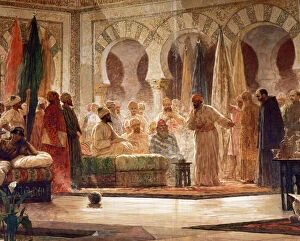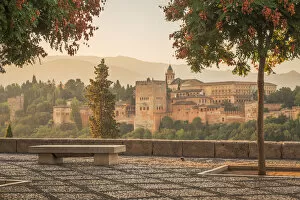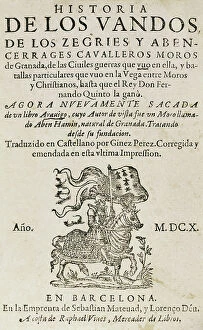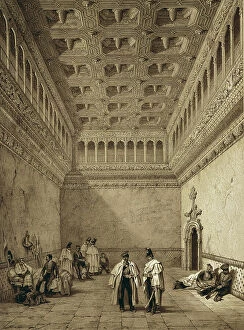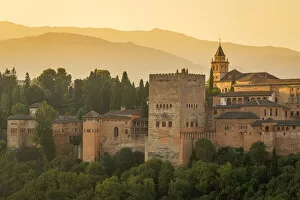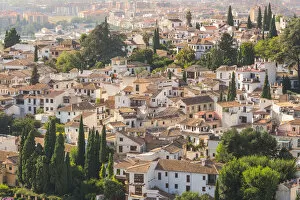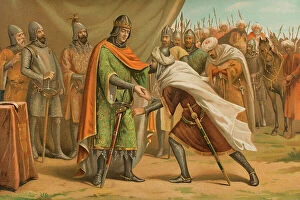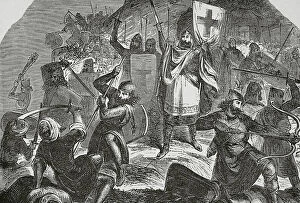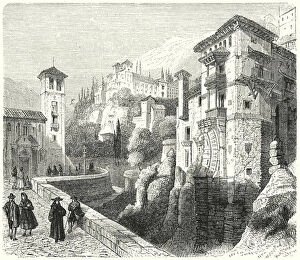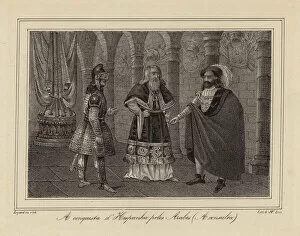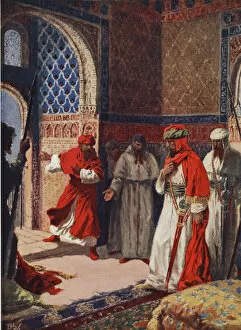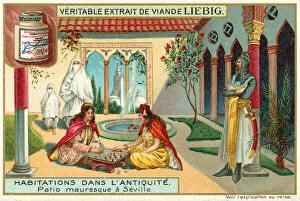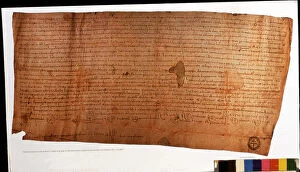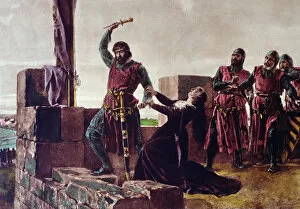Al Andalus Collection
"Exploring the Rich History of Al-Andalus: A Journey through Time and Culture" Step into the captivating world of Al-Andalus
For sale as Licensed Images
Choose your image, Select your licence and Download the media
"Exploring the Rich History of Al-Andalus: A Journey through Time and Culture" Step into the captivating world of Al-Andalus, a historical region that witnessed remarkable events and left an indelible mark on Spain's heritage. At its helm stood Abd-ar-Rahman III, a visionary Emir and Caliph who ruled with wisdom and grandeur from 889 to 961. (Photo: Cordoba, Spain) One cannot overlook the Conquest of al-Andalus by Ferdinand the Saint, as it reshaped the course of history. Ferdinand III of Castile, depicted in an engraving, led his forces with valor and determination during this pivotal period in the early 13th century. Delve further back into time to witness significant battles like the Battle of Covadonga in 722. This clash marked a turning point when Pelayo's Christian army triumphed against Muslim rule, setting off a chain reaction that would shape Spain's destiny for centuries to come. (Miniature: Battle of Tours or Battle of Poitiers - October 732) The artistic legacy left behind by Islamic culture is awe-inspiring; their pottery showcases intricate designs and exquisite craftsmanship. Taifor presents us with a ceramic plate adorned with a majestic horse motif – an example of their mastery over decorative arts. Notable rulers such as Abd ar-Rahman II also played crucial roles in shaping Al-Andalus' political landscape. As Basque ambassadors arrived at his court seeking diplomacy, they were met with respect and open-mindedness – evidence of cultural exchange within this diverse realm. No journey through Al-Andalus would be complete without experiencing Granada's iconic landmarks firsthand. The Mirador de San Nicolas offers breathtaking views encompassing the magnificent Alhambra palace complex – an architectural marvel that epitomizes Moorish splendor even today. To truly understand modern-day Spain, one must explore the intricate tapestry of its past.

